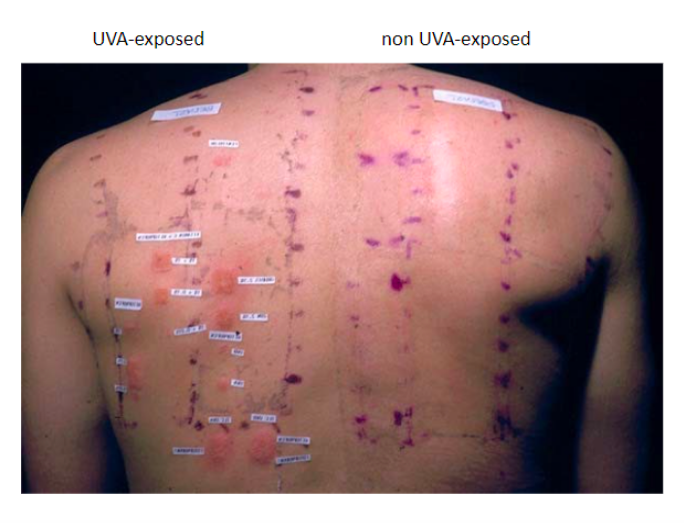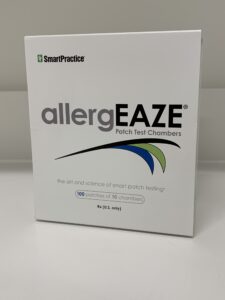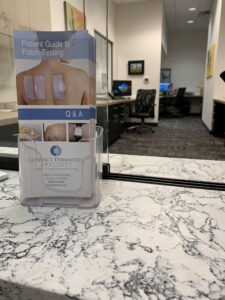Answers to 5 of the Most Common Questions about Patch Testing During the Summer
- How do you patch test a sunburned patient?
- What is the best patch test panel to use for sweating?
- What can I tell my patient about how and when to shower?
- Could my patient be allergic to their sunscreen?
- What about photopatch testing?
Patch Testing a Sunburned Patient
Don’t do it. Intense UV exposure is immunosuppressive and will risk false negative reactions. When patch testing, it is very important to avoid placing a panel on any area that is already itchy, red or bumpy, and this includes sunburns.
Looking for more information on reaction reading? The Contact Dermatitis Institute™ has a free video about reaction reading that is viewed on C.D.I. Community.
Panel Choice for Sweating
Utilize allergEAZE® Skin Patch Test Chambers. allergEAZE are made out of non-woven polyester material, making them comfortable as they allow sweat out. A polyurethane chamber may trap sweat underneath, un-adhering the patient’s patch test.
How and When Your Patient Should Shower
Patients should avoid high-sweat activities and not take showers during the 48 hours that they wear their patches if possible. Often, the request to avoid a shower can be a complaint from a patient. If they cannot avoid showering, front-facing showers or sponge baths are not preferable but are a safer choice than a standard shower or bath.
Having trouble explaining this to your patient? Give your patients the Patient Guide to Patch Testing. The Patient Guide to Patch Testing is a customizable brochure that walks your patients through the process of patch testing and answers many of their most frequently asked questions including how and when to shower.
Allergic Contact Dermatitis from Sunscreen
Patients tend to up their sunscreen in the summertime, so you may see an increase in patients with sunscreen-related allergic contact dermatitis. Chemicals in sunscreen that are known to cause this reaction are:
- Benzophenone-3
- Benzophenone-4
- para-aminobenzoic acid
- 2-ethylhexyl p-(dimethylamino)benzoate
- 2-ethylhexyl-4-methoxycinnamate
- 2-hydroxy-4-methoxybenzophenone(oxybenzone)
- 3,4-methyl benzylidene camphor
- isoamyl-p-methoxycinnamate
- menthyl anthranilate (Meradimate)
- phenylbenzimidazole-5-sulfonic acid
- tert.-butyl methoxydibenzoyl methane
- And more
If you suspect a sunscreen rash, you may want to consider testing with a sunscreen grouping, available on SmartPractice Allergen Bank.
Photopatch Testing
A photoallergy is a substance that requires UV-induced changes to cause contact allergy. Common causes for a photoallergy include antimicrobial substances, fragrances, sunscreen agents (ironically), NSAIDs, and other drugs.
In order to test for a photoallergy, there is a strict methodology: Patch test the photo-allergens in duplicate, expose one set to UVA on day of removal (use opaque covering for a non-exposed set), and then apply a UVA dose of 5-10 J/cm2.
 Summer is known for longer, warmer days, vacations, and sunshine. But as a patch testing physician, you also know that the summer months can come with challenges – especially for those who live in hot and humid conditions. We hope these answers help you continue to give your patients the diagnosis they deserve.
Summer is known for longer, warmer days, vacations, and sunshine. But as a patch testing physician, you also know that the summer months can come with challenges – especially for those who live in hot and humid conditions. We hope these answers help you continue to give your patients the diagnosis they deserve.









